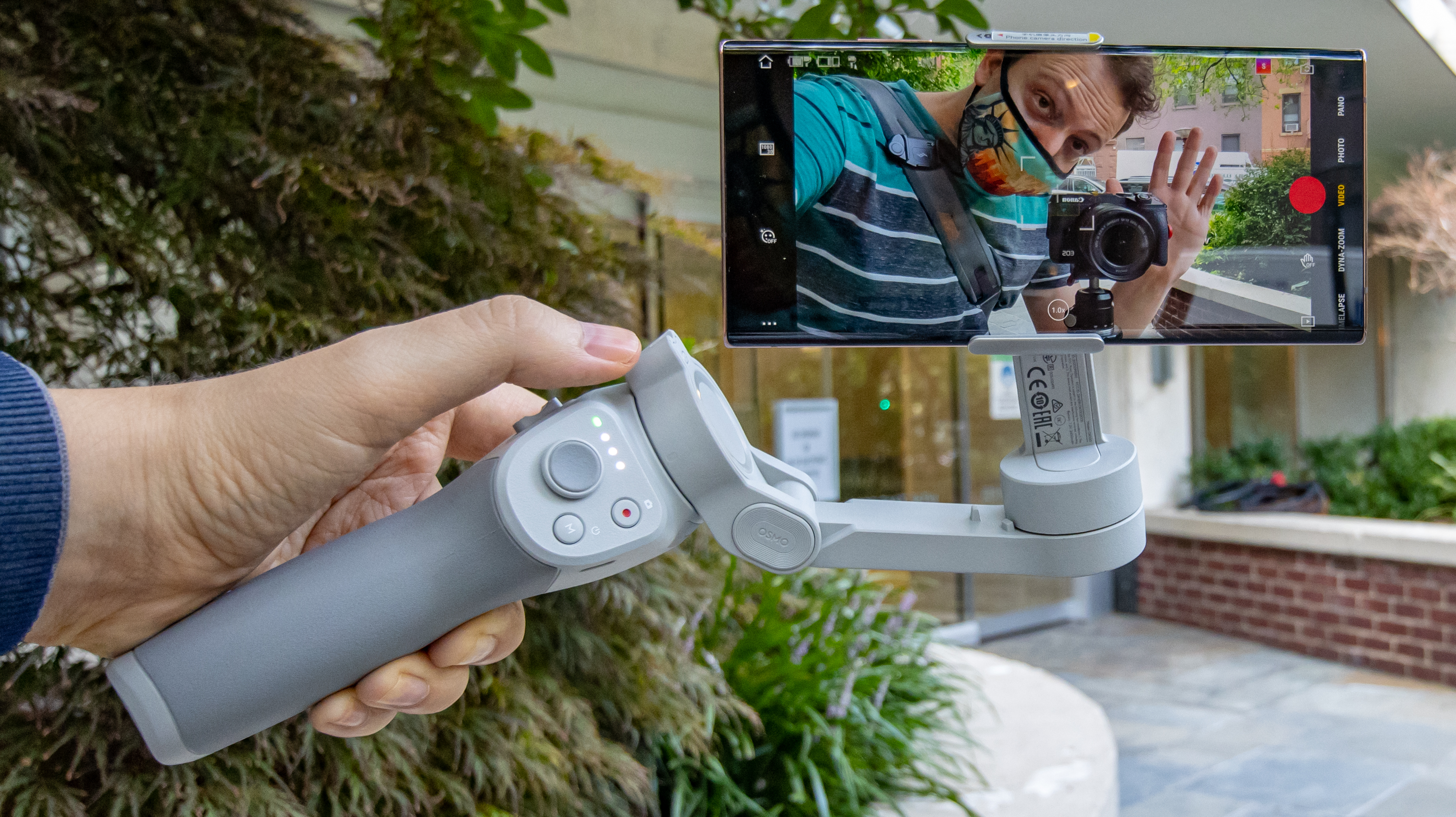TechRadar Verdict
The DJI OM 4 offers a way to capture smooth cinematic video without holding your smartphone completely hostage. Magnets attach your phone to the gimbal arm, which features upgraded 3-axis motors and a neat, though gimmicky Dolly Zoom mode. It's a connivence upgrade over the Osmo Mobile 3 with only a slight price bump.
Pros
- +
Convenient magnetic design
- +
Motors are stronger than OM3
- +
Doesn't run hot
Cons
- -
Won't work with all phone cases
- -
DJI Mimo app has limitations
- -
Dynamic Zoom a bit of a gimmick
Why you can trust TechRadar
Two-minute review
The DJI OM 4 is the new smartphone gimbal that makes capturing steady, shake-free video a cinch, and it does this without completely hogging your phone for the task.
Magnets change things up from last year's DJI Osmo Mobile 3 gimbal and essentially fix our biggest pet peeve: having to constantly mount and unmount our phone from gimbal's secure grappling claw every single time we wanted to use our handset.
DJI OM 4 offers the best way to get cinematic Hollywood crane-like tracking shots out of a smartphone camera. The upgraded 3-axis gimbal is unmatched. And, now, our phone no longer feels hostage to our content-creating ambitions.
With a forceful tug on the magnetic hook, we went from capturing steady video to seamlessly sending texts and quickly Googling things mid-shoot. Before, we often left the phone attached to the gimbal and did this. It looked... it looked awkward.
The strong magnet on the DJI OM 4 arm and the magnet on the new grappling hook clenched around our phone always felt secure – secure enough that we suspended a pricey iPhone 11 Pro Max and Samsung Galaxy Note 20 Ultra mid-air in our testing.
We never ran into an issue with the magnet, however, be warned: this compact claw won't hold onto all phone cases equally. Our iPhone, with a medium-sized case, slipped out and crashed to the floor (it was thankfully unharmed) because the case made the phone a smidge too thick and, with a rounded frame, too easy to pop out.
Everything else about the DJI OM 4 feels similar if you've used a smartphone gimbal before: it combines the 3-axis motors and electronic image stabilization to create a neat dolly effect for your video, the balancing to set things up is minimal, and the entire gimbal folds down, a perk introduced in the Osmo Mobile 3.
New trick shots via the DJI Mimi app let you play director in unique ways: Dolly Zoom mode (seen on the DJI Mavic Zoom 2 drone) allows you to tap into your innermost Alfred Hitchcock, and a "Clone Me" panorama mode allows you to hog the spotlight – multiple times. But these software perks alone shouldn't be the reason you upgrade: they're coming to the Omso Mobile 3, too, via the DJI Mimo app.
The DJI OM 4 remedies one of the reasons we quit using all gimbals after a while: it's a pain to mount and unmount a camera. DJI, facing competition from several cheap gimbals filling Amazon, is one ninja-walk step ahead of its copycat rivals, harnessing the power of magnets to offer convenience you can't get anywhere else – yet.
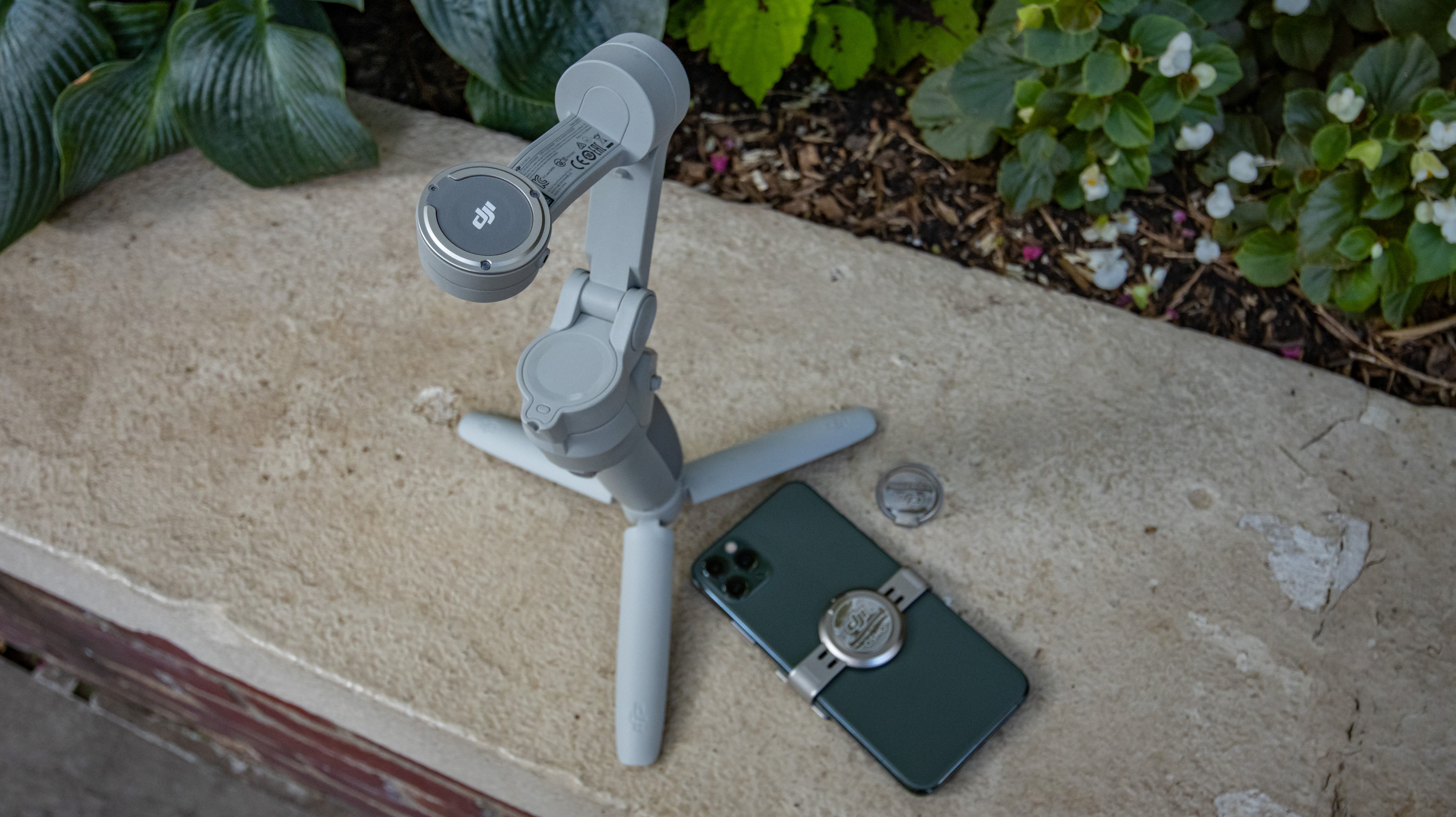
DJI OM 4 price and release date
- DJI OM 4 price: $149 / £139 / AU$239 – includes accessories in the box
- No accessory-free version, giving it a higher starting price
- Released on Wednesday, August 26
DJI OM 4 – short for DJI Osmo Mobile 4 – launched Wednesday, August 26, and you ca to purchase it right now from DJI's own online store and various retailer partners like B&H Photo and Moment in the US, Wex in the UK. Moment also sells gimbal counterweights to work with its larger smartphone glass lenses and filters.
Its, launched a month shy of a year after the Osmo Mobile 3, makes the turnaround time rather quick, and there's been a slight price increase – depending on how you look at things and what country you're in. There's no accessory-free version on sale.
The DJI OM 4 costs $149 / £139 / AU$239, and it includes the gimbal, a carrying bag, the phone clamp, a magnetic ring holder (along with extra adhesive stickers), a wrist strap and a tripod base. So the price is a little deceptive compared to last year's starting price.
For comparison, at launch, the Omso Mobile 3 cost $119 / £99 / $AU159 / AED 399 sans accessories, but when you factor in the add-ons that now come with the OM 4, the Mobile 3 price went to $139 / £119 / $AU189 / AED 479. So in the UK there's no price increase, while the US sees a modest $10 bump.
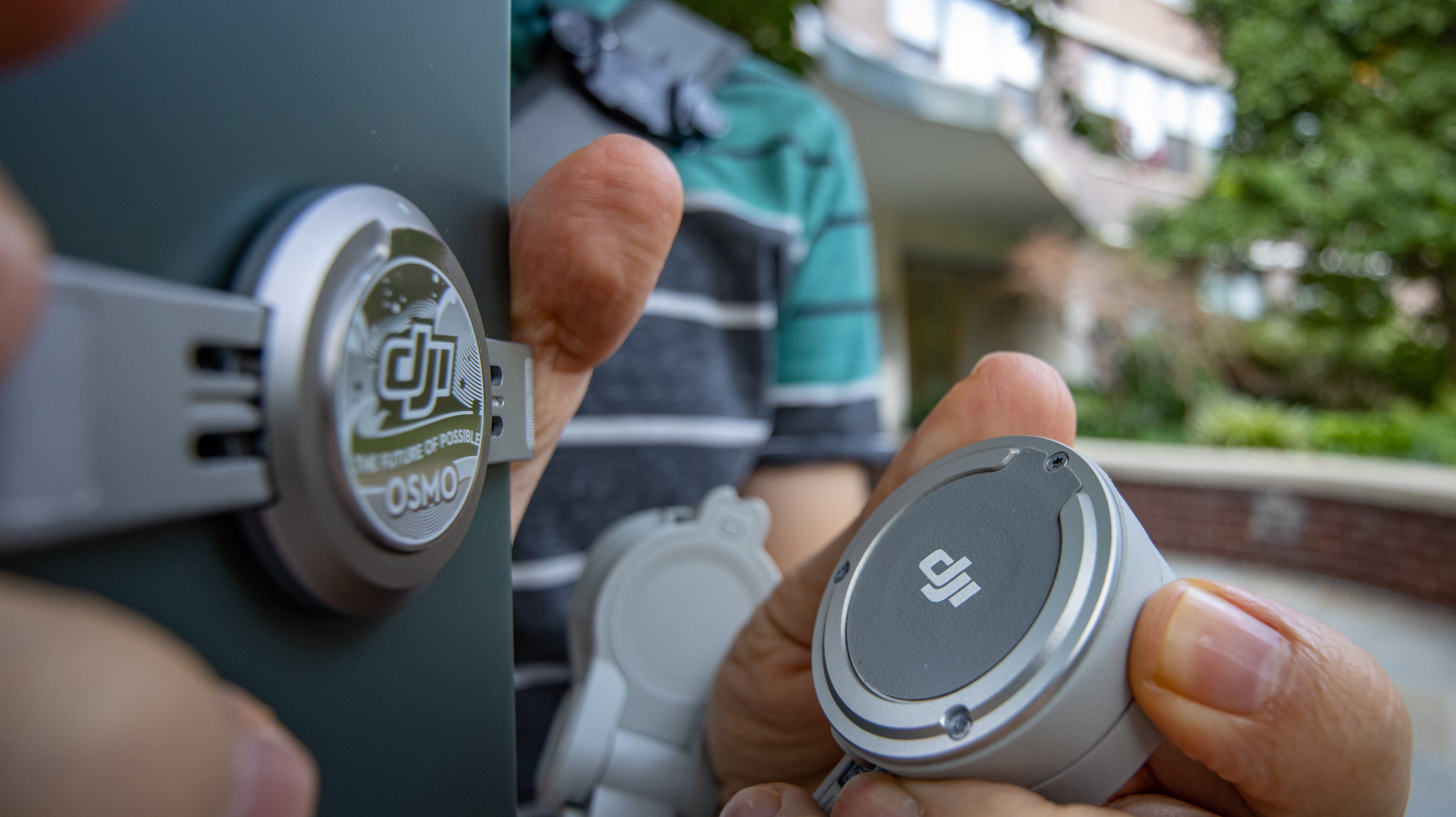
Magnetic phone attachment
- Two strong magnet types: wrap-around claw or pop-socket-like adhesive plate
- The claw attachment won't work on thick and sloped smartphone cases
- The adhesive plate won't bind to glass phone very well, so choose wisely
There's one major reason to get the DJI OM4 over its predecessor and competitors: it uses magnets to quickly and easily secure your smartphone to the gimbal.
Magnetically attaching the claw, which grasps onto your phone and has a magnet on the other side, to the gimbal arm, which is capped with a magnet, feels firm. And yet it's easily detachable with a hard enough of pull.
DJI got the strength of this magnet right – it feels secure without being so aggressive that it's difficult to pull the two magnets apart when you want to use or stow your smartphone. The company's campy video accurately illustrates how easy it is to use.
DJI OM 4's claw fits around the biggest phones, too. Our 6.5-inch iPhone 11 Pro Max and new Samsung Galaxy Note 20 Ultra worked with this claw attachment, and we expect the rumored-to-be-bigger iPhone 12 series to fit just as easily.
Here's a caveat: when we had our iPhone in a medium-sized case, that little bit of extra girth and a sloped plastic frame forced the iPhone to pop out multiple times. We weren't using an Otterbox Defender case, either. It was a Razer Arctech Pro – not an ultra-thin case by any means, but not incredibly bulky either. That's a concern if you are tied to a specific phone case.
Luckily, DJI includes a second attachment method in the OM 4 box: an adhesive ring holder. This pop-socket-like puts a flat magnet on the back of your phone – a sticker on one side and the magnet with a kickstand circular ring that pops out on the other. We found that it works best on plastic rather than glass. So lesson learned: use the claw for naked glass phones, and the adhesive ring holder for plastic cases.
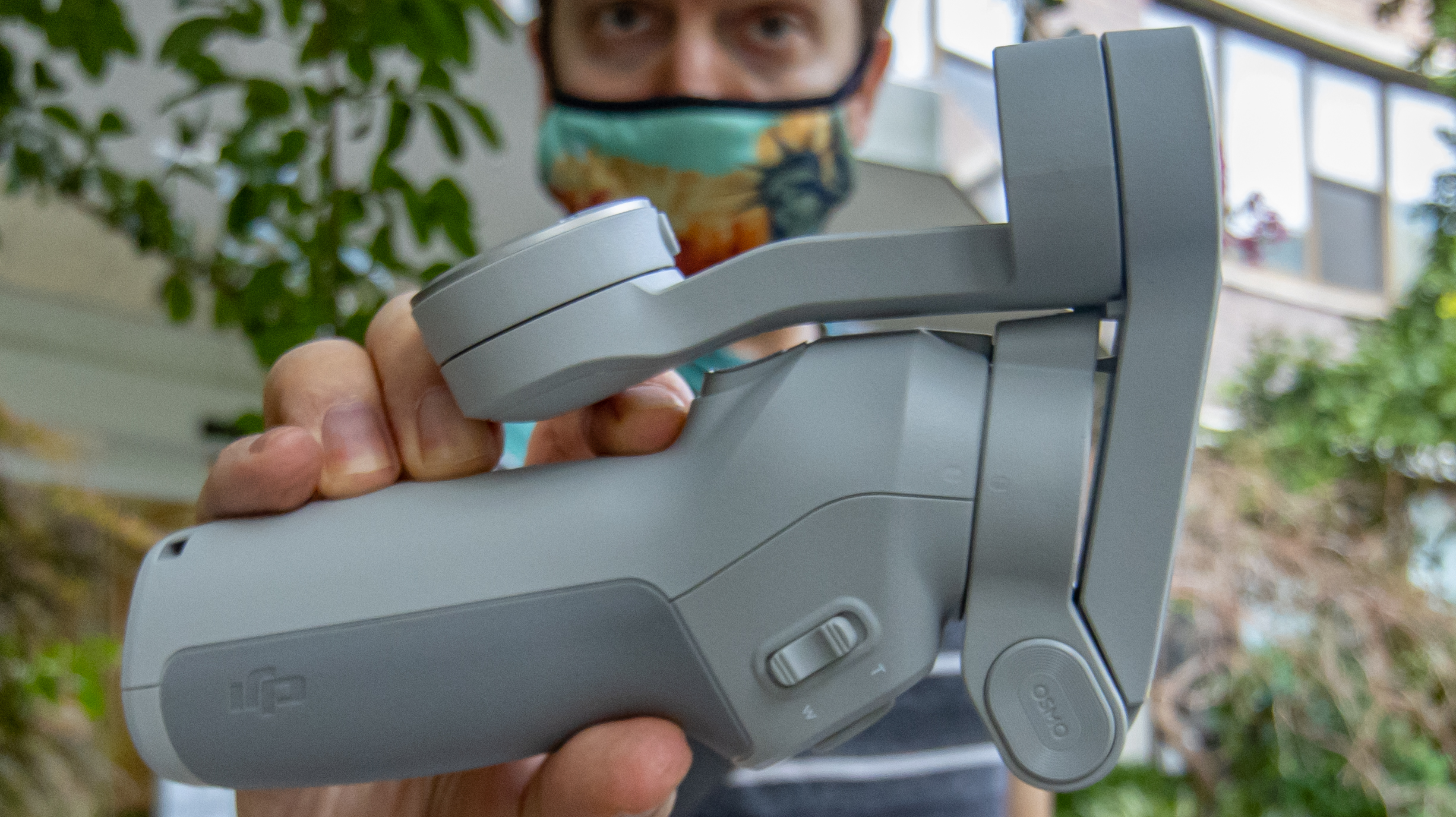
The rest of the design
- Gimbal folds down to make carry extremely pocketable
- New off-white color feels safer to carry in the streets
Snapping our phone to the DJI OM 4 and taking it off again made the setup process incredible simple. On top of that, being able to fold the motorized arm down against the pistol grip made the entire operation take about three seconds to execute and just as easy to hide away in a backpack. This means we're bound to use the DJI OM 4 on a daily basis and capture more smooth footage.
The rest of the DJI OM 4 shape hasn't changed: there's a rubberized pistol grip for holding this lightweight gimbal comfortably and a motorized arm that pans and tilts your smartphone in an effort to counteract your shaky hand and arm movement.
The layout is essentially the same, too. The grip has a bunch of controls within the reach of your thumb: a flat joystick (now more rubberized) for easy panning and tilting override controls, a record button so you don't have to jarringly tap your phone screen and ruin the first second of your video, and a mode button for switching between shot types: photos, video, panoramas and so forth. Double pressing this mode button changes orientation: landscape (any YouTube video) vs portrait (popular for Instagram Stories).
Your index finger will easily wrap around the trigger button, which, with a single tap, locks onto subjects via DJI's ActiveTrack 3.0 and, with two taps, re-centers the camera (we used this a lot). Three taps switches between the front and back camera, although on an iPhone and many Android phones you still can't switch between the front and back cameras while recording video. That's our No. 1 request for the DJI Omso Mobile 5 or DJI OM 5, or whatever they end up calling it.
On the left side of the pistol grip is a rocker control for zooming in and out – that's become infinitely more useful as more smartphone get telephoto and ultra-wide angle cameras. On the right side is an exposed USB-C charging port and, above that, a USB-A port that can help charge your phone (it turns out taking 8K and 4K@60fps video in sunny conditions will absolutely tank your smartphone battery life).
One last design bit: the color has been tweaked to an off-white/gray combination that should get fewer concerned double takes. That pistol grip, lighter in color, looks less like a weapon, which, when carrying it around in New York City, made us feel comfortable when out doing street photography.
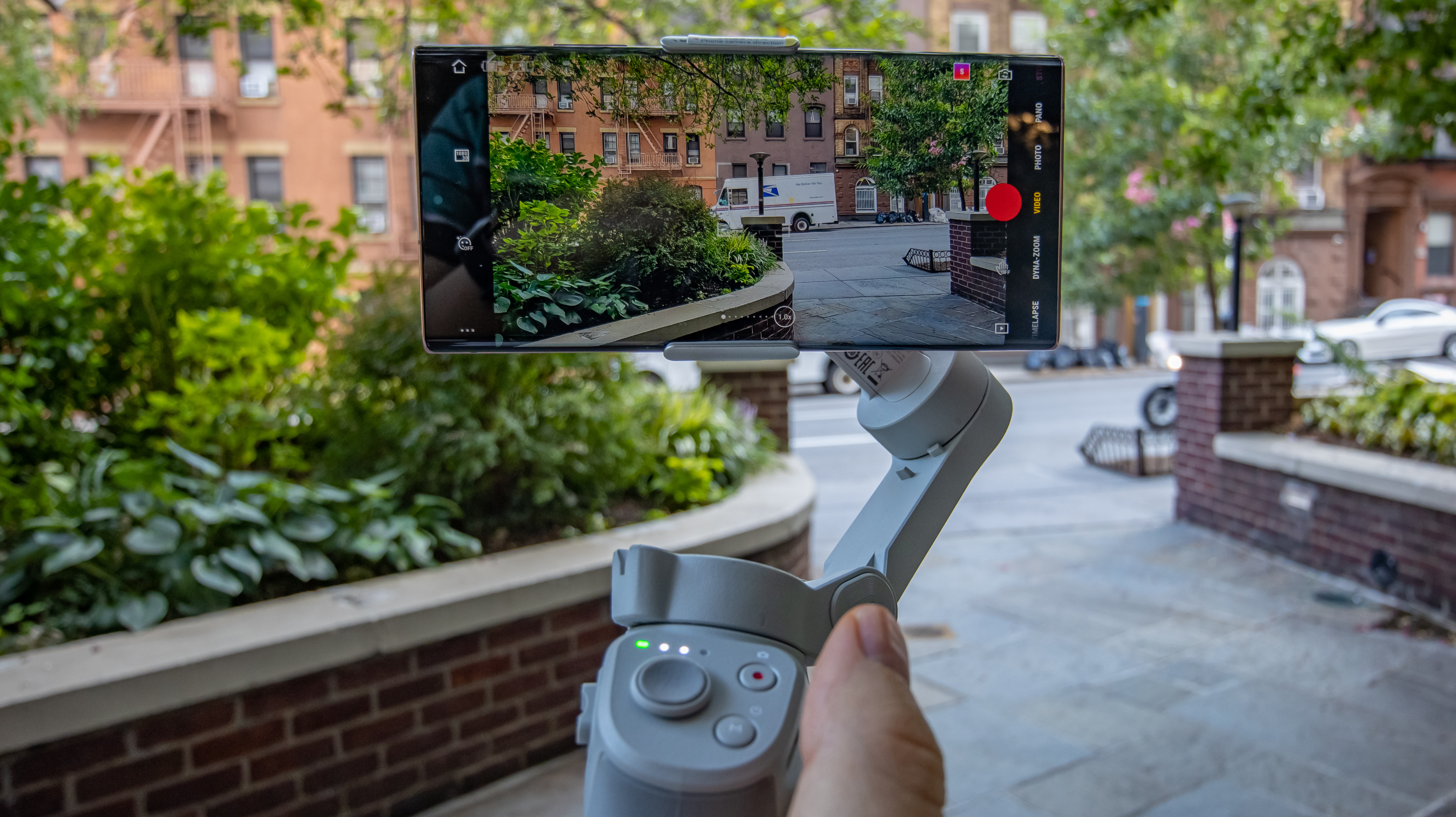
Features
- Updated DJI Mimo app hosts video, photo, panorama, and time lapse controls
- New Dolly Zoom offers new creativity, but looks very digitally enhanced
- Clone Me panorama feature goes beyond your default smartphone camera
We got the DJI OM 4 to pair with our iPhone and Android phones via the iOS and Play Store app called DJI Mimo, and it instantly recognized the new gimbal via a Bluetooth connection. We didn't have to dive into our phone's settings menu to pair it.
While the grip controls are helpful for the basics, the on-screen viewfinder lets you fine tune your shot. For example, this app is where you can adjust the exposure, aperture, shutter speed and ISO in manual settings mode, and, in motion time lapse mode, set a path for a truly unique sped up video. It doesn't capture full JPEG stills, like the DJI Omso Pocket does, which makes editing individual photos possible for a much better time lapse. But its fast-moving video modes are stellar nonetheless.
There are more controls than most smartphone camera apps give you, with a few exceptions on Android flagship phones. On the iPhone, it's a pro version of Apple's default camera app without sacrificing ease of use (you still can't configure time lapse settings on the iPhone's default app, even in iOS 14 beta).
In fact, we found it easier to use DJI's Mimo app vs Apple's default camera app for two reasons: gesture controls allowed us to use our hands to start and stop video, and the enhanced ActiveTrack 3.0 allowed us to automatically track a living subject – inanimate object like cars can still be finicky to pick up. We found humans and pets easy to track, as long as nothing got in the way (we crossed behind a thin pillar and it lost us in our tests, so it's not perfect).
With ActiveTrack 3.0, the DJI OM 4 made us into a one-man video shooting machine, even when we stepped out of the initial frame. It injects more creativity into solo video projects that used to require heavy equipment or a crew of videographers.
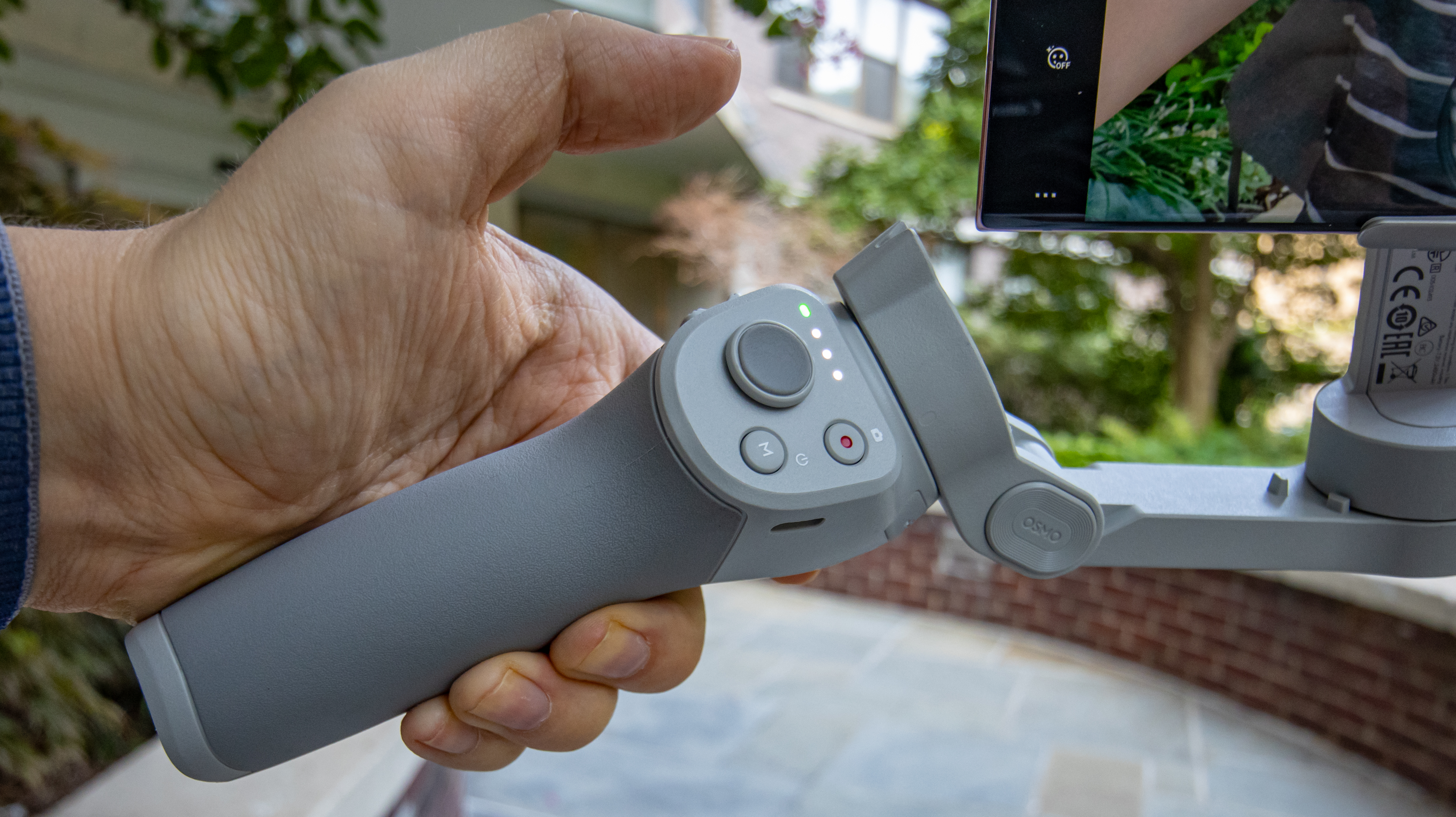
Performance
- 15-hour battery life lasted us more than a day of recording
- Doesn't run as hot as the DJI Osmo Mobile 3
The two questions we get asked the most about this gimbal series when showing it off are: "How long does it last?" and "Is the battery replaceable?" In both cases, the answer from us is a smug and belabored: "It doesn't really matter".
The DJI OM 4 lasts 15 hours on a single charge with a 2,450mAh battery capacity (the iPhone 11 Pro Max has a 3,969mAh battery size), which was more than enough when we were shooting with it on a hot summer weekend and charging our phone with it via the USB-A port (so handy, as we had screen brightness to the max).
No, 15 hours isn't a full 24 hours, as some people like to point that out. But no one is using a gimbal every second when they're out creating video. There are a lot of stops and starts. Also, you need to sleep. So 15 hours is all-day battery life for most people.
More importantly, the DJI OM 4 ran less hot than the Osmo Mobile 3 when we were using it for an all-day shoot outdoors in the sun. Our Note 20 Ultra got much hotter when we were recording video.DJI touted that its new gimbal has enhanced motors inside, and that plays a roll not just in better stabilization, but how hard the motors have to work to stabilize your phone.
Last important performance enhancer to touch on: accessories. It was easy to cheap out of the bundle before (we've done it), but because the OM 4 includes the compact Grip Tripod, we had a way to rest the gimbal upright as soon as we took it out of the box. This gimbal doesn't stand up on its own otherwise, so using the 1/4-inch mount on the bottom is a must. You're not taking a time lapse or motion without one.
Should I buy the DJI OM 4?
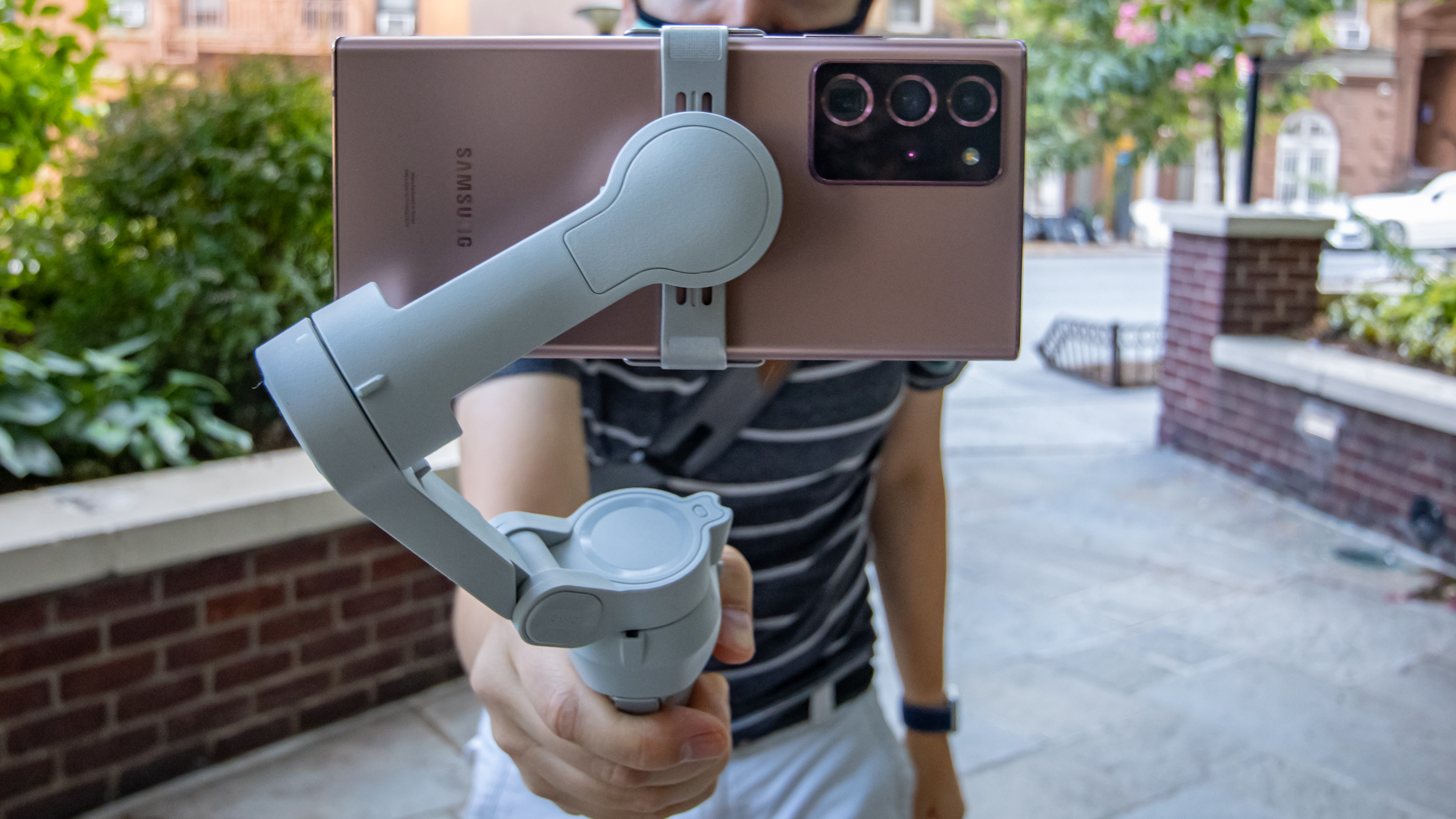
Buy it if...
You want the best gimbal for smartphone video
Have you seen all of the shaky smartphone video out there? This is the remedy that the world needs to create cinematic video minus the learning curve that's often attached to video production.
You have a use for cinematic video
The price is still low enough to treat this as a neat toy, but it'll get the most use from live streamers, real estate agents and vloggers who don't thumb their nose at smartphone cameras – basically anyone who uses video for work or a hobby.
You own the DJI Osmo Mobile 2 or an older gimbal
The DJI OM 4 isn't just cooler to the touch, it's bound to be more responsive than past gimbals. When these compact Hollywood-studios-on-a-stick overheat, they tend to have a mind of their own.
Don't buy it if...
You love your incompatible phone case
Smartphone cases are very personalized, and some people refuse to give them up. We found that not all smartphone cases work the same with the magnetic claw, so you may have to make choices.
You just bought the DJI Osmo Mobile 3
The OM 4 is a connivence upgrade, one that inspire you to record more video. But if you just spent money on the Osmo Mobile 3, the draw to the Mobile 3 may be lost on you.
You intend to use the Dolly Zoom professionally
Your Alfred Hitchcock masterpiece should stick to using the DJI Mavic 2 Zoom drone for Dolly Zoom shots. The feature here, while welcomed, is a bit too digitally enhanced to compare.
First reviewed: August 2020
